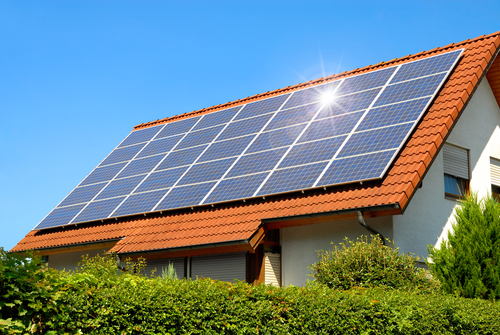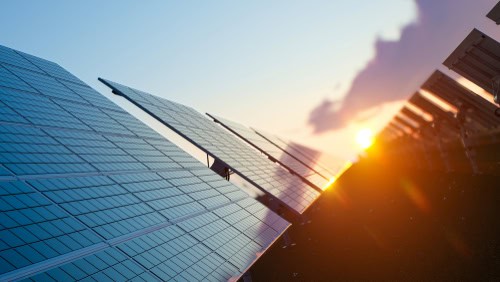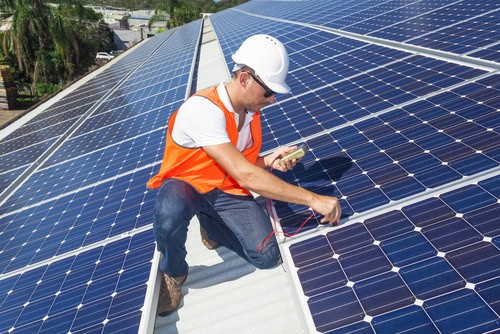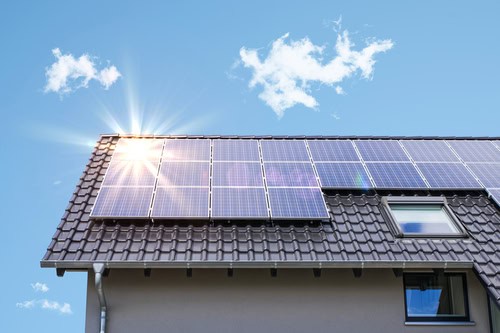
Know all about the Importance of Solar Panel
May 20, 2020
What Are The 3 Types of Solar Panels?
September 1, 2020How Does A Solar Panel Work?

Wondering how does a solar panel work? A solar panel is a panel of photovoltaic cells that take in sunlight and convert it into electricity. The panel works by permitting light particles or photons to knock atomic electrons free to produce electricity.
This is because each photovoltaic cell is made of two silicon semiconductor materials sandwiched to make a single cell. Each slice is doped to make the slice either negative or positively charged for creating an electrical field.
To add additional electrons, Phosphorous is doped into silicon’s top layer giving negative electrical charge. While Boron adds up to positive charge with fewer electrons.
As and when a sunlight photon knocks a free electron, the electric field pushes the electron off the silicon junction. Other components convert these free electrons within the cell to usable power.
The plates on the sides in the cell accumulate these electrons to transmit them to panel wires. This is how it becomes an electricity source. Researchers have come up with solar cells that are ultrathin and only thick by 1.3 microns. Lighter solar cells are equally efficient and flexible.
Solar cells have been used in different applications of wearable electronics, architecture, and aerospace technology along with many more. Solar thermal and CSP-Concentrated solar power are other kinds of solar power.
We all have seen solar panels on our neighbor’s roofs and wondered how they actually generate electricity. They appear like a shimmering glass panels network. How are these panels using the sun’s renewable solar energy and making electricity?
How Does A Solar Panel Work? Here’s step by step process:
Step 1- Panel activated with sunlight

Every panel is built in a layer of cells of silicon, a metallic framework, a casing made of glass encircled with a unique film and associated wiring. For optimum effect, the panels are brought together by grouping them into arrays- order of series.
These panels or arrays are placed in large outdoor areas or on rooftops. These cells are called solar cells or photovoltaic cells. These cells absorb daylight sun or solar energy.
Step2- Generation of Electrical Current

There is a semiconductor wafer that is very thin in every solar cell. Each wafer is made from two silicon layers. A layer is positively charged while the other is negatively charged. This creates an electric field. Light energy from the sun enters the photovoltaic cell, the cell energizes and results in loose electrons.
The electrons are knocked from the atoms that are inside the wafer. The loose electrons are in movement due to the electric field of the wafer. This movement of electrons is what the flow of electric current is.
Step 3- Conversion to Electrical Energy

Solar panels transform solar energy to electrical energy but the converted electrical energy is DC-Direct current. DC is not the electric current that is used by the majority of the homes. It is AC-Alternating current that is used which can be obtained by passing DC through an Inverter.
These inverters can be a single inverter to the solar panel or microinverters to the individual cell that is attached behind the cell.
Step 4- Electrical Energy that is a power source to your house

The converted DC to AC is made to run all through the electrical panel. This energy powers the appliances of the house. It is the same as regular power. Nothing needs to be changed. You can remain linked to your regular power company too.
Step 5- Usage that is measured by a net meter

When it is night or cloudy, the solar panels cannot absorb the solar energy for energy usage. Sometimes, there is too much solar energy accumulated with no usage when no one is at home.
This can be more than you need or less than you need depending on the case mentioned above. This is why a meter is connected to get the electricity flow measure to and from-in both directions of your home.
Your company of utilities can offer you credits for the power back to the grid. This is net metering.
How Does A Solar Panel Work? – Conclusion
As mentioned above, these steps and the process involved to convert the solar energy to electrical energy enables the working of solar panels efficiently.
The invention of the solar panel has enabled the human race to make use of solar renewable energy and power up our home efficiently in an eco-friendly way. A solar panel has been integrated in several technological and domestic applications.
It is definitely a powerful invention that benefits the human race in many ways.




